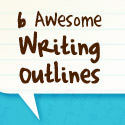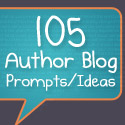I *hate* greeting card shopping.
 Recently, I popped into my local CVS to grab a Valentine’s Day card for my niece.
Recently, I popped into my local CVS to grab a Valentine’s Day card for my niece.
It started out as a positive experience. I approached the sparkling red and white display of Valentine’s cards with a smile on my face, imagining how excited my niece would be when she received a special note from her (favorite) aunt in the mail.
I picked up the first card that caught my eye because it had a cute puppy on it.
Then I checked out another with sparkly hearts.
I picked up one with flowers and one with a cute poem. I grabbed another with a Charlie Brown cartoon and opened another one with a teddy bear. I checked out one with Minnie Mouse and one with a rainbow and at least three others with more sparkly hearts.
Pretty soon, I’d gone through every card in the kids’ Valentine section — at least 30 cards in all.
I didn’t hate any of them and I didn’t love any of them, but I was overwhelmed by all of them.
Too many choices!
Frustrated that I couldn’t decide on a card, I stomped out of the store in a huff.
Whether it’s greeting cards or shampoo (Which one will really make my hair all shiny and flouncy like the girl in the commercial?) or cereal or car insurance, having lots of choices does not always make us happy customers.
So why do we do it to our readers?
I’m talking about a very specific mistake I’ve seen a lot of authors make (and truth be told, I used to make it myself).
You give your readers too many choices for buying your book.
Here’s how it happens:
You publish your book and pay for the additional distribution package (as you should). Now your title is available all over the web — at Amazon, Barnes & Noble, Books-a-Million, etc.
And that’s just the paperback.
Add in your eBook options (the aforementioned three plus Smashwords, iTunes, Kobo, etc.) and suddenly you’ve given your readers 9 – 10 choices to make before they can purchase your book.
What’s wrong with choices?
We’ve been conditioned to think that more is always better — especially when it comes to options, right?
A few years ago, a social psychology graduate student conducted an experiment at her local market that proved exactly the opposite.
She set up a sample stand of jams and alternated between offering customers 6 and 24 varieties of jam. She discovered that even though the 24 choices attracted more attention, only 3% of people who stopped made a purchase, but when she displayed only 6 choices, customers bought jam 30% of the time. [Read more about the study here]
I’m pretty terrible at math, but even I can tell you there’s a significant difference between 3% and 30%.
How does that translate to book sales?
If your website lists 9 – 10 options for readers to pick where they should buy your book, you are losing sales.
I guarantee it.
You’re forcing readers to not only make the decision to buy your book, but then to weigh the pros and cons of each retailer before deciding where to make their purchase. As they analyze their choices, readers often find themselves in “analysis paralysis.”
They become overwhelmed and they make the easiest decision of them all — they choose not to buy anything.
So how do you fix analysis paralysis?
You should have one paperback choice and two eBook options. That’s it.
And I’ll tell you something else — your paperback choice should be Amazon. Not only is it the most popular online bookseller, it has the best shipping options, which is an important factor in the cost of your book.
For eBooks, I would strongly suggest Amazon and Smashwords (Obviously if you’re doing KDP Select you will only have one option!).
The reason we can offer two options in the eBook category is because we don’t have one universal format for eBooks just yet, so you can cover your bases with the most popular option (Amazon) and offer the rest of the available formats via Smashwords.
STOP! Really important point coming in 3…2…1…
Please note: I am *not* saying you shouldn’t have your books distributed to other retailers.
I’m saying you should limit the purchase options you give readers on your website and your social media networks.
It’s fine to have your books available on Barnes & Noble, Books-A-Million, Kobo and the rest. You never know when someone might be searching through titles on any of those sites and come across yours.
But where your marketing plan is concerned, you should avoid overwhelming your readers with too many options.
As an added bonus, driving your readers to three specific places will save you time when choosing links to share on Twitter, Facebook, in your Media Kit, etc.
What do you think?
- Do you get overwhelmed when you have to make too many decisions for a purchase?
- How many purchase options do you offer readers?
- Have you recently reduced your purchase options and noticed a difference in sales?
 We're
We're 








